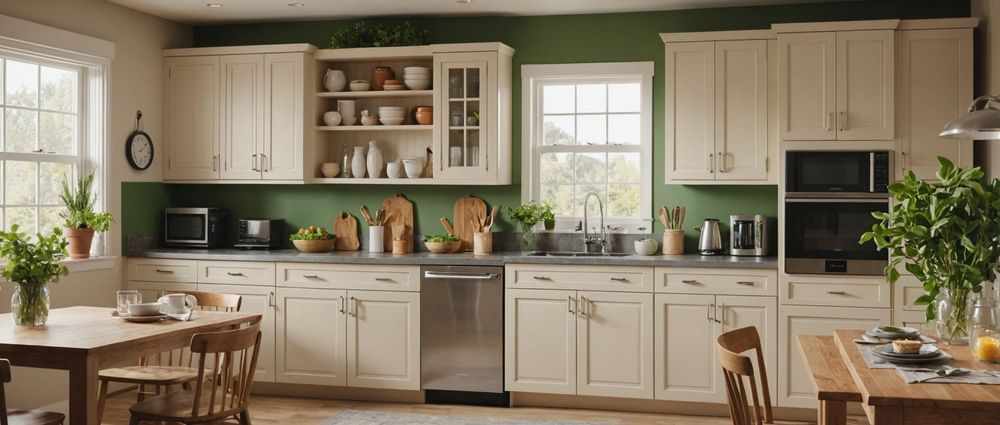When it comes to cooking and reheating food, two kitchen appliances often come into play: microwaves and ovens. While both serve the fundamental purpose of heating food, they operate in distinct ways and are suited for different culinary tasks. Understanding the differences between these two appliances can help you make informed choices for your cooking needs. This article will explore their mechanics, advantages, disadvantages, and culinary applications, giving you a comprehensive overview of microwaves and ovens.
Understanding the Basics: How Microwaves and Ovens Work

Microwaves and ovens utilize different heating methods to cook food. Microwaves use electromagnetic radiation to excite water molecules in food, causing them to vibrate and generate heat that cooks the food from the inside out. This method is efficient and quick, making microwaves ideal for reheating leftovers or defrosting frozen items in a matter of minutes. On the other hand, traditional ovens cook food through convectional heat, either through gas or electric elements, which surround the food and cook it uniformly from the outside in. This method takes more time but is essential for achieving specific textures and flavors, particularly in baked goods.
Advantages of Microwaves

Microwaves come with several significant advantages that make them a popular choice in many kitchens. Here’s a comprehensive look at the key benefits:
- Speed: Microwaves can significantly reduce cooking time, helping you prepare meals quickly. This is particularly beneficial for busy individuals or families.
- Energy Efficiency: Microwaves consume less energy compared to traditional ovens, making them more cost-effective, especially for reheating and cooking small portions.
- Easy to Use: Most microwaves come with preset cooking options for various foods, making meal preparation simple and straightforward.
- Space-Saving: Microwaves are compact and do not require a lot of space, making them ideal for small kitchens or for adding to a countertop.
- Less Cleanup: Since microwaves often require minimal cookware, there is less mess to clean up after cooking.
Advantages of Ovens
While microwaves offer many advantages, ovens have their unique set of benefits that make them indispensable in cooking. Here’s why you might opt for an oven:
- Versatility: Ovens can perform a wide range of cooking techniques, including roasting, baking, broiling, and more.
- Flavor and Texture: Foods cooked in an oven often achieve deeper flavors and desirable textures, especially for baked goods such as bread and pastries.
- Batch Cooking: Ovens have more space, allowing you to cook larger quantities of food at once or multiple dishes simultaneously.
- Even Cooking: Ovens distribute heat more uniformly, ensuring that food is evenly cooked, which is crucial for certain recipes.
- Cooking Experience: Many culinary enthusiasts prefer ovens for their ability to create more complex dishes and the satisfaction of traditional cooking techniques.
Key Differences: Microwaves vs. Ovens
Understanding the key differences between microwaves and ovens can significantly influence your cooking experience. Here are some main distinctions:
- Cooking Speed: Microwaves cook food much faster than ovens, making them ideal for reheating or quick meals.
- Cooking Method: Microwaves use radiation to cook, while ovens rely on direct heat or convection methods.
- Texture and Flavor: Ovens excel at developing textures and flavors that microwaves often cannot replicate.
- Energy Use: Microwaves typically use less energy than ovens, especially for small cooking tasks.
- Size and Space: Ovens are usually larger and require more space than compact microwaves.
Conclusion
Both microwaves and ovens play crucial roles in modern kitchens, each bringing unique advantages to the table. Microwaves shine in terms of speed and convenience, perfect for reheating and quick meals. Conversely, ovens are unmatched when it comes to preparing baked goods and achieving complex flavors and textures in meals. The choice between a microwave and an oven will ultimately depend on your cooking habits, kitchen space, and preferred methods of food preparation. Understanding the strengths and weaknesses of each appliance enables you to use them effectively, maximizing your culinary potential.
FAQs
- Can I bake in a microwave?
Yes, many microwaves come with convection settings that allow you to bake, though the results may differ from a traditional oven. - Is it safe to use aluminum foil in a microwave?
Generally, it’s not recommended to use aluminum foil in microwaves due to the risk of arcing, which can damage the appliance. - Which is more energy-efficient: a microwave or an oven?
Microwaves are typically more energy-efficient for reheating food, while ovens are better suited for larger cooking tasks. - Can I cook frozen food in a microwave?
Yes, microwaves are great for cooking frozen food quickly, but it’s essential to follow the cooking instructions for best results. - What types of dishes can be made in an oven that can’t be made in a microwave?
Dishes like soufflés, bread, and roasted meats often require the specific heat and cooking methods available only in an oven.



